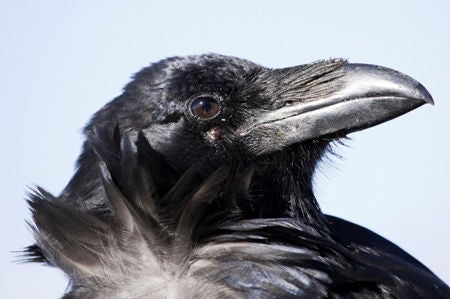
SCIENTIFIC NAME
Corvus brachyrhynchos
DESCRIPTION
Crows and their kin are very interesting birds, members of what may be the most intelligent avian family — the Corvidae. The crow’s cousins include magpies, blue jays, jackdaws, rooks, nutcrackers and ravens. Many people use the terms crow and raven interchangeably but the two birds are actually quite different. Ravens are larger than crows (on average about the size of a hawk), have a heavier bill, and a wedge-shaped tail. Crows are approximately the size of a pigeon with a fan-shaped tail.
RANGE
The American crow can be found in all of Canada except for the Yukon.
HABITAT
The crow adapts well to a variety of habitats. Unlike ravens, which prefer the countryside, crows thrive in cities and will gladly make their nests near large human centres.
DIET
Crows are omnivorous - they will eat anything edible, and many things, which aren't. Their regular diet includes insects, crops (especially corn), carrion, fruit, nuts and occasionally the eggs or young of other birds. Despite their bad reputation for eating crops, crows also eat a number of pests, which are harmful to those same crops, including cutworms, wireworms, grasshoppers, and weeds.
BEHAVIOUR
undefinedPRIMARY ECOSYSTEM ROLES
- 0







